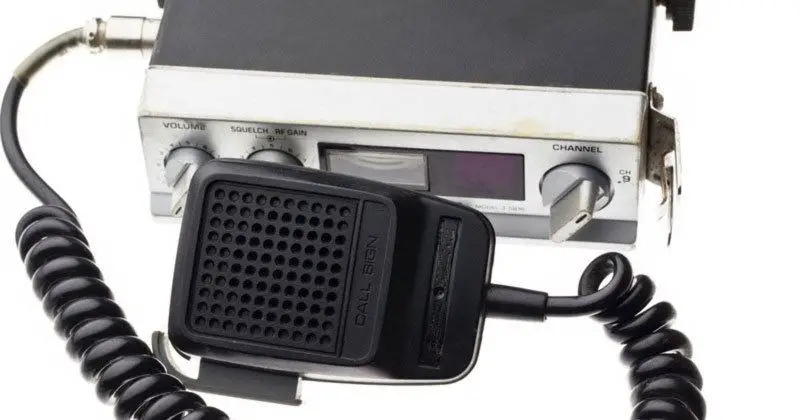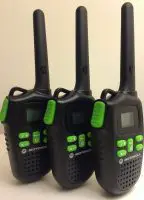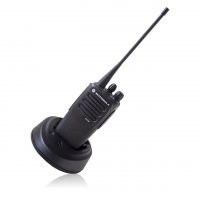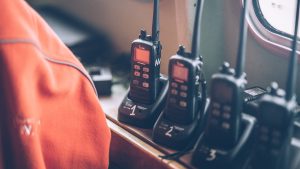Table of Contents
CB vs Ham Radio – Everything You Need to Know
Many people compare a Citizen Band radio (CB) with ham radio. Everyone has a reason for getting a radio, and this is more important than the radio itself. Matching a radio to its purpose will result in a satisfied radio operator. Read on the learn more about CB vs ham radio.
What Is Your Purpose?
Range
Be honest with yourself. If you plan to use your radio to communicate with other radio operators within your community, your radio requirements will be vastly different from a radio operator in Minnesota who would like to have a conversation with someone in Australia.
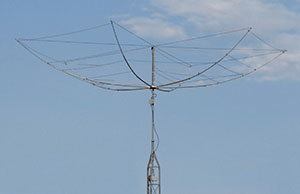
Size
Radios can be large base stations that include an antenna tower. Some radios are hard-wired into a boat or vehicle while others are self-contained, hand-held units. If the radio is used on a boat, special considerations will have to be made.
Activities
Ham radio is strictly non-commercial, so it is important that a radio operator has a clear idea of how the radio will be used. Radio communication between vehicles on the highway will require a different radio from an operator using a paddle for Morse code or sending an email with a Pactor modem. Perhaps you need to communicate with other people using a handheld radio for a community event or an emergency rescue operation.
What Is A Band?
Before comparing a CB radio and a ham radio, it is important to understand radio bands. This is one of the most crucial differences in CB and Ham radio.
A band is a spectrum of radio frequencies. Different bands will support different ranges of communication. Think about your AM radio. All the frequencies in AM radio are composed of a single spectrum of frequencies from 535 to 1605 KHz. This is one band, the AM band.
The FCC regulates all bands and allocates them for specific uses.
Citizen Band Radio
 CB radio is one band within the 27MHz (11m) band. All CB radios operate within these frequencies. They are further divided into 40 individual channels. Think of these individual channels like TV channels.
CB radio is one band within the 27MHz (11m) band. All CB radios operate within these frequencies. They are further divided into 40 individual channels. Think of these individual channels like TV channels.
CB radio operators can access any of the 40 channels but, they are not able to work in frequencies between the set channels. This feature makes CB radios easy to use.
Here are some more CB radio features:
Range
CB radios have a typical range of one to two miles. The range can increase to an occasional 20-25 miles depending upon the antenna and atmospheric conditions such as propagation and solar flares.
Power
FCC regulates the power allotted to CB operators which is, “4 watts output (AM) or 12 watts output (SSB) as measured at the antenna connector on the back of the radio.”
Licensing
CB radio operators do not need a license to transmit on CB radios.
Radio Configurations
While some radio operators have CB base stations, the vast majority of CB radios are mobile units installed in vehicles or hand-held units.
Activities
CB radios can be used for commercial enterprises. Most CB radios are used for short-range, mobile communication, especially between vehicles.
Other CB Radio Considerations
- CB radios are not recommended on boats because the Coast Guard no longer monitors the channels for emergency response.
- Channel 9 is used for emergencies and roadside assistance for motorists.
Ham Radio
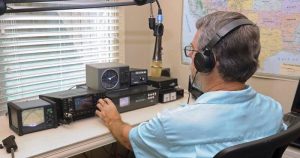 Ham Radio, also known as amateur radio, is not just one band, but 26 bands spaced from 1.8 Megahertz to 275 Gigahertz. Ham radio encompasses a huge range of possibilities for operators to work and experiment with.
Ham Radio, also known as amateur radio, is not just one band, but 26 bands spaced from 1.8 Megahertz to 275 Gigahertz. Ham radio encompasses a huge range of possibilities for operators to work and experiment with.
Range
Ham radio bands cover both short distances across town and global, international communications. Depending on the band and ham radio equipment, amateur operators can also communicate with astronauts stationed at the International Space Station.
Power
FCC regulates power for ham radios depending upon the band being used. They also regulate the height and placement of antenna towers.
Licensing
Ham radio requires a license. Ham radio is tightly monitored as well as self-monitored so much of the interference challenges that plague the CB channels are virtually nonexistent. Ham radio operators must hold one of the following licenses to operate:

- FCC Technician – entry-level license
- FCC General Class – extended band privileges for international communication
- FCC Extra Class – privileges extended to all ham bands
Radio Configurations
With so many bands, radio configurations can be any or a combination of several configurations. Here is just a sample of a few radio configurations:
- A large base station with a laptop and other accessories
- Hardwired mobile ham radios for vehicles and boats with a Pactor modem for sending and receiving data such as weather faxes or emails
- Handheld portable ham radios for short-range communication
Activities
Ham radio enthusiasts enjoy a number of activities. They often specialize in a sub-field. Here is a short list of just a few activities that ham radio operators enjoy:
- Community service and emergency response
- Radio technology experimentation
- Global networking and communication
- Digital programming
- Contesting
- Amateur radio clubs
Other Ham Radio Considerations
- Ham radio is strictly non-commercial. No business can be conducted on a ham band.
- Ham radios can be used for voice, data (text such as emails) and imagery.
- Ham radio can be complex and confusing for a novice, but there are plenty of clubs and organizations with Elmers (mentors) to help newcomers.
You May Also Like:
To Conclude
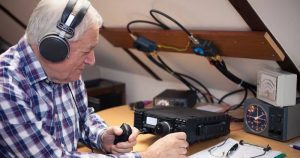 When comparing CB vs ham radio, it is comparing one band to 26 bands. The important point is in deciding one’s purpose for using radio technology. If a person wants to operate only within short distances between trucks, CB radio will work just fine.
When comparing CB vs ham radio, it is comparing one band to 26 bands. The important point is in deciding one’s purpose for using radio technology. If a person wants to operate only within short distances between trucks, CB radio will work just fine.
Many people start with a CB radio and then discover that they want more. Ham radio can be as simple or complex as an operator wishes. It is a huge hobby with over two million amateur operators around the world. Most communities in the US have a local amateur radio club.
Both CB and ham radio have distinct characteristics. Decide on your purpose, and then choose the radio that best suits your style of communication.
Resources for more information:


